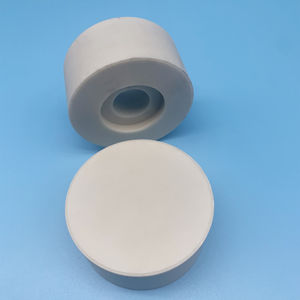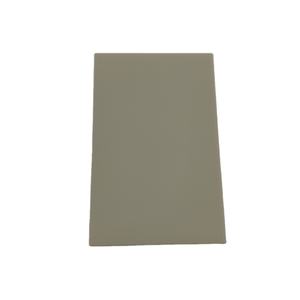Discover Premium Ceramic Products | Durability & Elegance United | Advanced Ceramics
PRODUCT PARAMETERS
Description
Overview of aluminum nitride ceramics
Aluminum Nitride Ceramic is an advanced ceramic material with aluminum nitride as the main component. It has been widely used in electronics, optics, and mechanics due to its unique properties.
Features of aluminum nitride ceramics
High thermal conductivity: Aluminum nitride ceramics have relatively high thermal conductivity, usually between 170-260 W/m·K, which makes it an excellent heat dissipation material. It is especially suitable for electronic devices that require efficient heat dissipation, such as substrate materials for power semiconductor devices.
Good electrical insulation: Despite its high thermal conductivity, aluminum nitride ceramics are excellent insulators of electricity, which can effectively prevent current leakage and ensure the safe operation of electronic components.
Low dielectric constant and dielectric loss: These characteristics make aluminum nitride ceramics very suitable for use in high-frequency circuits because it can reduce energy loss during signal transmission.
High temperature resistance: Aluminum nitride ceramics can maintain structural stability and strength at extremely high temperatures. Its melting point is about 2800°C, so it is suitable for applications in high temperature environments.
Low thermal expansion coefficient: Compared with semiconductor materials such as silicon, aluminum nitride has a lower thermal expansion coefficient, which means it has better dimensional stability when the temperature changes, which helps improve packaging reliability.
Corrosion resistance: Aluminum nitride ceramics have good chemical stability to most molten metals and are not easily oxidized or corroded, allowing them to perform well in harsh environments.
High mechanical strength: Although not as hard as some other types of ceramic materials, aluminum nitride ceramics still provide enough mechanical strength to allow them to be used in many structural applications.
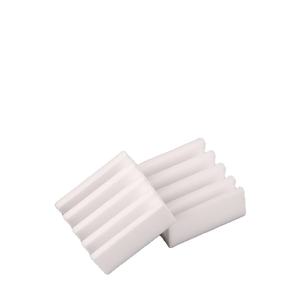
(0.635mm Thickness Aluminum Nitride Ceramic Plate AlN Ceramic PCB Substrate Sheet)
Specifications of 0.635mm Thickness Aluminum Nitride Ceramic Plate AlN Ceramic PCB Substrate Sheet
The 0.635 mm density light weight aluminum nitride ceramic plate (AlN ceramic PCB substratum sheet) is designed for high-performance electronic applications. This product provides outstanding thermal conductivity, rated between 170-180 W/mK. It effectively transfers heat far from sensitive parts, making it excellent for high-power devices. The plate’s thickness is specifically managed at 0.635 mm, ensuring consistent performance in portable layouts. This accuracy sustains tight resistances called for in sophisticated wiring.
Light weight aluminum nitride ceramic provides strong electrical insulation. Its dielectric stamina goes beyond 15 kV/mm, stopping existing leak in high-voltage settings. The material runs accurately across a large temperature range, from -50 ° C to 500 ° C. This stability suits harsh conditions in aerospace, auto, and industrial systems.
The surface finish of the AlN plate is smooth, with a roughness standard (Ra) below 0.4 μm. This level of smoothness ensures appropriate bond for circuit layers and coverings. Home plate stands up to chemical corrosion from acids, alkalis, and organic solvents. This durability prolongs service life in aggressive settings.
Aluminum nitride ceramic has a low thermal expansion coefficient, closely matching silicon. This compatibility lowers anxiety in semiconductor packaging, enhancing device reliability. The product’s thickness is about 3.26 g/cm THREE, using light-weight strength compared to conventional metals.
The 0.635 mm AlN ceramic plate is compatible with typical PCB manufacturing procedures. It works with thin-film and thick-film deposition strategies. The product is laser-drillable, allowing specific through development for multilayer designs. Its non-toxic structure satisfies RoHS and REACH conformity requirements.
Applications consist of power electronics, LED components, RF/microwave circuits, and heat spreaders. Home plate is used in IGBT modules, laser diodes, and high-frequency interaction gadgets. Its thermal management capabilities stop overheating in densely stuffed circuits.
Personalized sizes and shapes are offered. The common monotony resistance is within 0.1 mm per 25mm size. The product is provided in panels or individual items, with optional metallization (copper, gold, aluminum) for soldering or wire bonding.
Light weight aluminum nitride ceramic is sintered at heats to accomplish full thickness. This process gets rid of porosity, boosting mechanical toughness. The flexural stamina surpasses 300 MPa, withstanding fracturing under tons.
This product is packaged in anti-static materials to avoid contamination. Taking care of standards advise utilizing cleanroom handwear covers to keep surface area honesty. Preparations differ based upon modification, with basic sizes shipped within 5-7 company days.
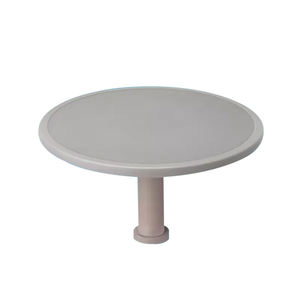
(0.635mm Thickness Aluminum Nitride Ceramic Plate AlN Ceramic PCB Substrate Sheet)
Applications of 0.635mm Thickness Aluminum Nitride Ceramic Plate AlN Ceramic PCB Substrate Sheet
The 0.635 mm density aluminum nitride ceramic plate (AlN ceramic PCB substratum sheet) serves essential duties in advanced electronics. This product takes care of high-power applications efficiently. Its high thermal conductivity (170-200 W/mK) transfers heat away from components quickly. This prevents overheating in circuits. Digital devices remain secure under hefty lots. The thin 0.635 mm design fits portable contemporary electronic devices. Space-saving arrangements benefit without losing performance.
AlN ceramic plates operate in LED lights systems. They take care of warm from high-brightness LEDs. This extends LED life expectancy. Light output keeps consistent. The product’s electrical insulation avoids brief circuits. Voltage-sensitive parts remain safe. RF and microwave tools utilize these plates. Signal loss reduces as a result of reduced dielectric loss. High-frequency efficiency boosts. Wireless interaction systems count on this.
Semiconductor making uses AlN substrates. They work as base layers for chips. High thermal security sustains procedures like chemical vapor deposition. Wafer warping minimizes. Precision in chip manufacturing increases. Power electronic devices like IGBT components depend upon these plates. Warm from high-current procedures dissipates rapidly. Tools last much longer. Malfunction dangers decline.
The ceramic’s mechanical stamina manages extreme problems. It withstands wear, deterioration, and thermal shock. Industrial machinery utilizes it in high-stress environments. Chemical exposure does not degrade it. Automotive systems use AlN plates in sensing units and control units. Temperature variations in engines do not impact integrity.
Laser diode packaging utilizes the 0.635 mm AlN sheets. Warm from lasers spreads evenly. Diode effectiveness enhances. Clinical devices like imaging systems employs these plates. Electrical noise disturbance lowers. Analyses remain exact. The material’s safe nature fits medical setups.
Custom-made shapes and openings are feasible with CNC machining. Components integrate seamlessly. No extra adhesives or coatings are needed. Production expenses reduced. Setting up steps simplify. AlN ceramic plates meet needs for miniaturization. High-power thickness devices execute much better. Industries like aerospace, power, and telecommunications advantage.
Company Introduction
Advanced Ceramics founded on October 17, 2014, is a high-tech enterprise committed to the research and development, production, processing, sales and technical services of ceramic relative materials and products.. Since its establishment in 2014, the company has been committed to providing customers with the best products and services, and has become a leader in the industry through continuous technological innovation and strict quality management.
Our products includes but not limited to Silicon carbide ceramic products, Boron Carbide Ceramic Products, Boron Nitride Ceramic Products, Silicon Carbide Ceramic Products, Silicon Nitride Ceramic Products, Zirconium Dioxide Ceramic Products, Quartz Products, etc. Please feel free to contact us.(nanotrun@yahoo.com)

Payment Methods
T/T, Western Union, Paypal, Credit Card etc.
Shipment Methods
By air, by sea, by express, as customers request.

5 FAQs of 0.635mm Thickness Aluminum Nitride Ceramic Plate AlN Ceramic PCB Substrate Sheet
What is the 0.635mm thick aluminum nitride ceramic plate used for? This product is mainly used in high-power electronics, LED lighting, and semiconductor devices. It works as a circuit substrate or heat sink. The material efficiently transfers heat away from sensitive components. This prevents overheating and improves device reliability. The thin design suits compact electronic setups.
Why pick aluminum nitride over other ceramic materials? Aluminum nitride offers better thermal conductivity than alumina or aluminum oxide. It handles high temperatures without expanding much. This reduces stress on connected parts. It also insulates electricity well. These traits make it ideal for demanding environments.
How does the thermal conductivity of aluminum nitride compare to metals? Aluminum nitride conducts heat around 170-180 W/mK. This is lower than copper or aluminum. But it outperforms many ceramics. Its electrical insulation is a key advantage. Metals conduct electricity, which can cause short circuits. Aluminum nitride avoids this risk while moving heat effectively.
Are there handling precautions for this ceramic plate? Yes. The plate is brittle despite its strength. Avoid dropping or applying sudden force. Use proper tools during installation. Do not bend or twist it. Store it in a dry place. Moisture or contaminants might affect performance. Follow manufacturer guidelines for machining or drilling.
Can the plate be customized for specific needs? Yes. Manufacturers often cut the plate into different sizes or shapes. Holes or grooves can be added for mounting. Surface coatings or metallization are possible for soldering. Customization depends on application requirements. Check with suppliers for feasibility. Changes might impact thermal or mechanical properties. Testing is recommended for critical uses.
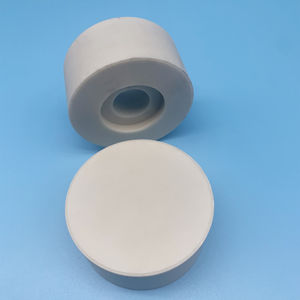
(0.635mm Thickness Aluminum Nitride Ceramic Plate AlN Ceramic PCB Substrate Sheet)
REQUEST A QUOTE
RELATED PRODUCTS
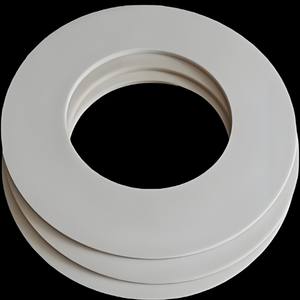
Customized Hihg Thermal Conductivity Ain Aln Aluminium Nitride Ceramic Disc Plate/blcok
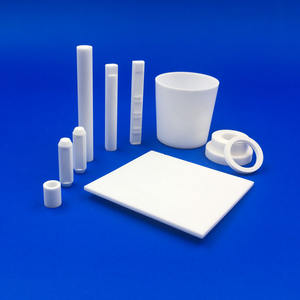
AlN Aluminium Nitride Ceramic Sheets / Substrate/plate for Semiconductor
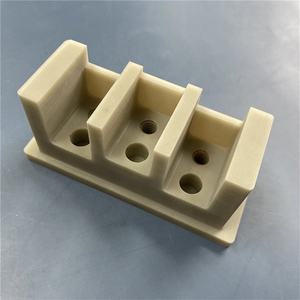
Factory Direct High Thermal Conductivity Aluminum Nitride ALN Ceramic thermal insulator for High-power Circuits
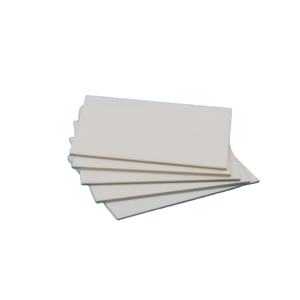
AlN Aluminum Nitride Ceramic Plate
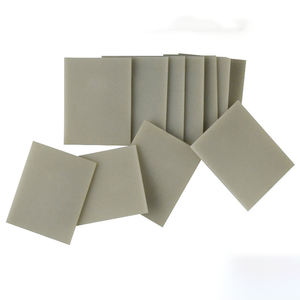
TO-220 TO-247 170W/m.k Aln Aluminum Nitride Ceramic Board
